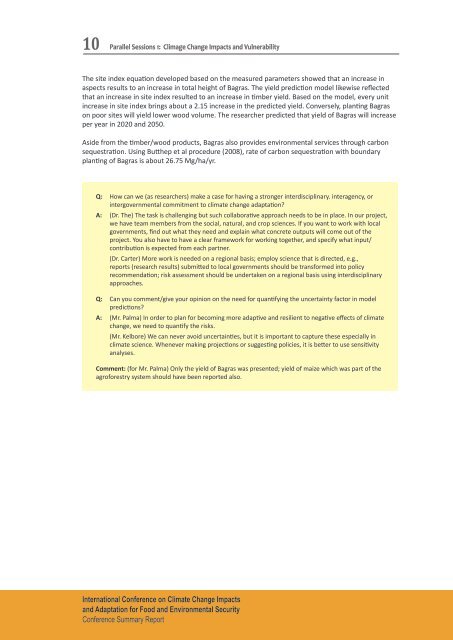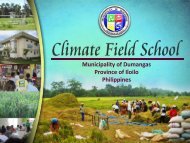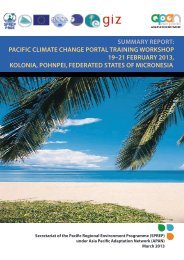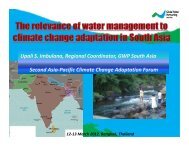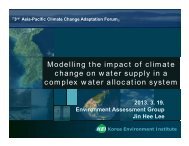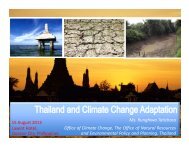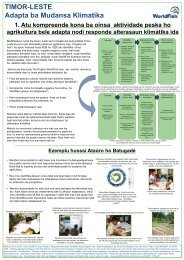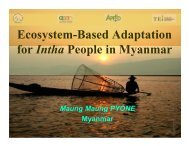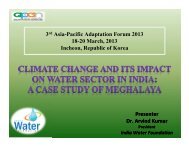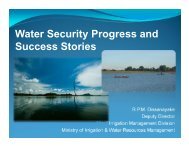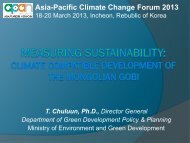PDF file (2.44 MB) - Asia Pacific Adaptation Network
PDF file (2.44 MB) - Asia Pacific Adaptation Network
PDF file (2.44 MB) - Asia Pacific Adaptation Network
You also want an ePaper? Increase the reach of your titles
YUMPU automatically turns print PDFs into web optimized ePapers that Google loves.
10Parallel Sessions 1: Climage Change Impacts and VulnerabilityThe site index equation developed based on the measured parameters showed that an increase inaspects results to an increase in total height of Bagras. The yield prediction model likewise reflectedthat an increase in site index resulted to an increase in timber yield. Based on the model, every unitincrease in site index brings about a 2.15 increase in the predicted yield. Conversely, planting Bagrason poor sites will yield lower wood volume. The researcher predicted that yield of Bagras will increaseper year in 2020 and 2050.Aside from the timber/wood products, Bagras also provides environmental services through carbonsequestration. Using Butthep et al procedure (2008), rate of carbon sequestration with boundaryplanting of Bagras is about 26.75 Mg/ha/yr.Q: How can we (as researchers) make a case for having a stronger interdisciplinary. interagency, orintergovernmental commitment to climate change adaptation?A: (Dr. The) The task is challenging but such collaborative approach needs to be in place. In our project,we have team members from the social, natural, and crop sciences. If you want to work with localgovernments, find out what they need and explain what concrete outputs will come out of theproject. You also have to have a clear framework for working together, and specify what input/contribution is expected from each partner.(Dr. Carter) More work is needed on a regional basis; employ science that is directed, e.g.,reports (research results) submitted to local governments should be transformed into policyrecommendation; risk assessment should be undertaken on a regional basis using interdisciplinaryapproaches.Q: Can you comment/give your opinion on the need for quantifying the uncertainty factor in modelpredictions?A: (Mr. Palma) In order to plan for becoming more adaptive and resilient to negative effects of climatechange, we need to quantify the risks.(Mr. Kelbore) We can never avoid uncertainties, but it is important to capture these especially inclimate science. Whenever making projections or suggesting policies, it is better to use sensitivityanalyses.Comment: (for Mr. Palma) Only the yield of Bagras was presented; yield of maize which was part of theagroforestry system should have been reported also.International Conference on Climate Change Impactsand <strong>Adaptation</strong> for Food and Environmental SecurityConference Summary Report


